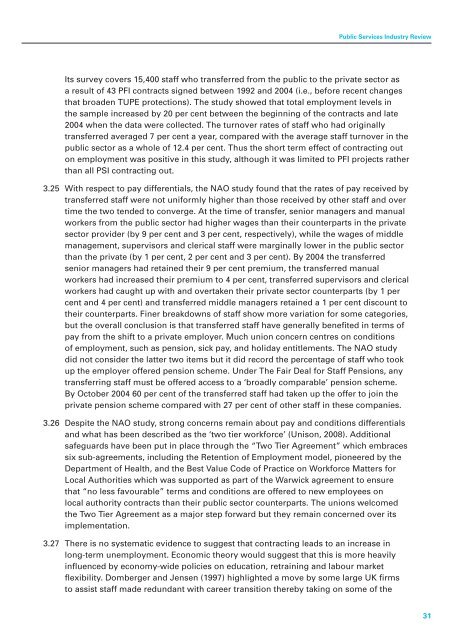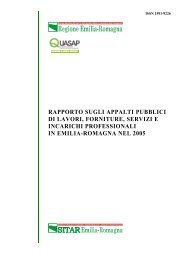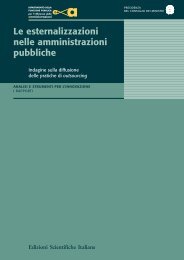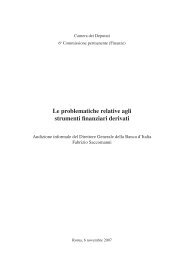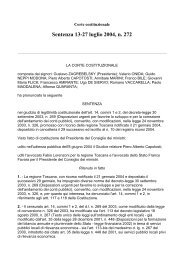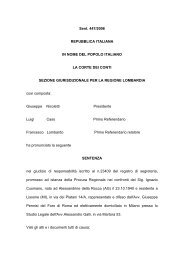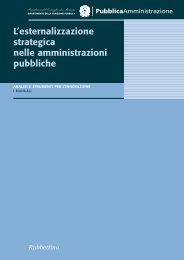Understanding the Public Services Industy
Understanding the Public Services Industy
Understanding the Public Services Industy
You also want an ePaper? Increase the reach of your titles
YUMPU automatically turns print PDFs into web optimized ePapers that Google loves.
<strong>Public</strong> <strong>Services</strong> Industry Review<br />
Its survey covers 15,400 staff who transferred from <strong>the</strong> public to <strong>the</strong> private sector as<br />
a result of 43 PFI contracts signed between 1992 and 2004 (i.e., before recent changes<br />
that broaden TUPE protections). The study showed that total employment levels in<br />
<strong>the</strong> sample increased by 20 per cent between <strong>the</strong> beginning of <strong>the</strong> contracts and late<br />
2004 when <strong>the</strong> data were collected. The turnover rates of staff who had originally<br />
transferred averaged 7 per cent a year, compared with <strong>the</strong> average staff turnover in <strong>the</strong><br />
public sector as a whole of 12.4 per cent. Thus <strong>the</strong> short term effect of contracting out<br />
on employment was positive in this study, although it was limited to PFI projects ra<strong>the</strong>r<br />
than all PSI contracting out.<br />
3.25 With respect to pay differentials, <strong>the</strong> NAO study found that <strong>the</strong> rates of pay received by<br />
transferred staff were not uniformly higher than those received by o<strong>the</strong>r staff and over<br />
time <strong>the</strong> two tended to converge. At <strong>the</strong> time of transfer, senior managers and manual<br />
workers from <strong>the</strong> public sector had higher wages than <strong>the</strong>ir counterparts in <strong>the</strong> private<br />
sector provider (by 9 per cent and 3 per cent, respectively), while <strong>the</strong> wages of middle<br />
management, supervisors and clerical staff were marginally lower in <strong>the</strong> public sector<br />
than <strong>the</strong> private (by 1 per cent, 2 per cent and 3 per cent). By 2004 <strong>the</strong> transferred<br />
senior managers had retained <strong>the</strong>ir 9 per cent premium, <strong>the</strong> transferred manual<br />
workers had increased <strong>the</strong>ir premium to 4 per cent, transferred supervisors and clerical<br />
workers had caught up with and overtaken <strong>the</strong>ir private sector counterparts (by 1 per<br />
cent and 4 per cent) and transferred middle managers retained a 1 per cent discount to<br />
<strong>the</strong>ir counterparts. Finer breakdowns of staff show more variation for some categories,<br />
but <strong>the</strong> overall conclusion is that transferred staff have generally benefited in terms of<br />
pay from <strong>the</strong> shift to a private employer. Much union concern centres on conditions<br />
of employment, such as pension, sick pay, and holiday entitlements. The NAO study<br />
did not consider <strong>the</strong> latter two items but it did record <strong>the</strong> percentage of staff who took<br />
up <strong>the</strong> employer offered pension scheme. Under The Fair Deal for Staff Pensions, any<br />
transferring staff must be offered access to a ‘broadly comparable’ pension scheme.<br />
By October 2004 60 per cent of <strong>the</strong> transferred staff had taken up <strong>the</strong> offer to join <strong>the</strong><br />
private pension scheme compared with 27 per cent of o<strong>the</strong>r staff in <strong>the</strong>se companies.<br />
3.26 Despite <strong>the</strong> NAO study, strong concerns remain about pay and conditions differentials<br />
and what has been described as <strong>the</strong> ‘two tier workforce’ (Unison, 2008). Additional<br />
safeguards have been put in place through <strong>the</strong> “Two Tier Agreement” which embraces<br />
six sub-agreements, including <strong>the</strong> Retention of Employment model, pioneered by <strong>the</strong><br />
Department of Health, and <strong>the</strong> Best Value Code of Practice on Workforce Matters for<br />
Local Authorities which was supported as part of <strong>the</strong> Warwick agreement to ensure<br />
that “no less favourable” terms and conditions are offered to new employees on<br />
local authority contracts than <strong>the</strong>ir public sector counterparts. The unions welcomed<br />
<strong>the</strong> Two Tier Agreement as a major step forward but <strong>the</strong>y remain concerned over its<br />
implementation.<br />
3.27 There is no systematic evidence to suggest that contracting leads to an increase in<br />
long-term unemployment. Economic <strong>the</strong>ory would suggest that this is more heavily<br />
influenced by economy-wide policies on education, retraining and labour market<br />
flexibility. Domberger and Jensen (1997) highlighted a move by some large UK firms<br />
to assist staff made redundant with career transition <strong>the</strong>reby taking on some of <strong>the</strong><br />
31


